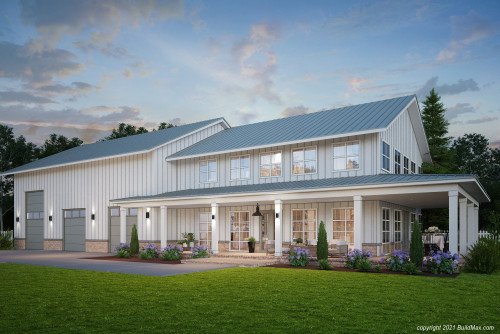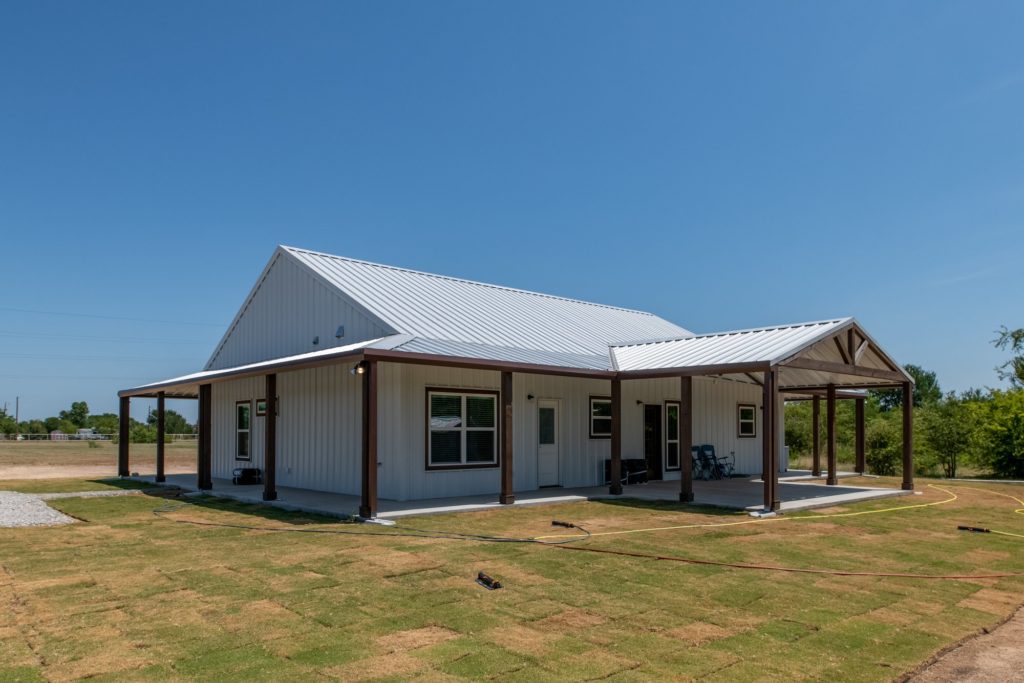Barndominiums Vs. Conventional Residences: a Comprehensive Comparison of Lifestyle and Performance
The choice in between barndominiums and standard homes encompasses different elements, consisting of way of living preferences and functional needs. Barndominiums are defined by their open designs and versatility, usually appealing to those that focus on common living and convenience.
Introduction of Barndominiums
Barndominiums, an unique real estate trend gaining popularity across different areas, blend the rustic appeal of barn-style style with the performance of modern-day space. These special frameworks typically include a steel or timber structure, integrating open floor strategies and high ceilings with energy-efficient functions. Frequently located on extensive country residential or commercial properties, barndominiums provide property owners the opportunity to delight in a calm way of life while giving ample room for different tasks.
The versatility of barndominiums expands beyond their aesthetic allure; they can serve as both living quarters and functional spaces for hobbies, workshops, or even local business. Their flexible design permits easy modification, suiting varied household demands and preferences. Many proprietors appreciate the low maintenance demands connected with steel siding and roofing, adding to long-lasting resilience.

Characteristics of Typical Residences
Stressing ageless style and convenience, standard homes are characterized by their distinct building styles, which frequently show historical impacts and local looks. Common features include balanced exteriors, gabled roofings, and an emphasis on craftsmanship, leading to a warm and welcoming environment.
Standard homes typically include components such as crown molding, wainscoting, and hardwood floor covering, improving their timeless charm. They generally feature numerous spaces with specified functions, advertising family interaction while enabling privacy. read more. The layout frequently consists of formal living and dining areas, which contribute to enjoyable visitors and organizing family celebrations
Outside products such as block, timber, or rock are regularly utilized, adding to longevity and a feeling of durability. Barndominium repair. In addition, lots of typical homes are made with front verandas or stoops, cultivating a feeling of neighborhood and connection with the neighborhood
Landscaping plays a substantial duty in typical home style, with well-kept gardens and pathways that boost aesthetic charm - click here. On the whole, typical homes personify a feeling of fond memories and stability, appealing to those who value heritage look at this now and a more organized living setting
Price Comparison
Usually, an expense comparison in between barndominiums and typical homes discloses considerable differences in construction expenses and total financial investment. Barndominiums, typically constructed from metal or steel structures, normally incur lower product and labor expenses than conventional homes built from timber and brick. The simplified layout of barndominiums can equate to decreased construction times, better reducing labor costs and quickening occupancy.
Usually, the price per square foot for a barndominium ranges from $100 to $150, while traditional homes can differ widely, commonly dropping between $150 and $300 per square foot, depending upon location, products, and design intricacy. This cost difference makes barndominiums an appealing option for budget-conscious purchasers seeking larger space without compromising quality.
Furthermore, barndominiums may cause long-term cost savings through lower upkeep costs, power efficiency, and insurance coverage rates. Their long lasting construction materials usually require much less maintenance in time contrasted to traditional homes. Nevertheless, it is essential to think about that while first costs may be reduced for barndominiums, the last investment will additionally rely on individual personalization and wanted amenities, which can influence the general expenditure in both housing types.
Way Of Life and Area Factors To Consider
When taking into consideration lifestyle and space, barndominiums provide a distinct versatility that attract a range of home owners. These hybrid frameworks incorporate household coping with useful room, often including open flooring strategies that can be adjusted to match specific requirements. This versatility is especially helpful for households or people looking for a tailored living atmosphere, permitting varied uses such as office, workshops, or leisure areas.

Furthermore, the visual charm of barndominiums can cater to both rustic and modern preferences, making them a flexible choice for different design choices (Barndominium builder). Inevitably, the selection in between a barndominium and a standard home usually depends upon just how well each choice lines up with the house owner's lifestyle desires and spatial requirements, highlighting the relevance of taking into consideration personal concerns in the decision-making procedure
Ecological Influence and Sustainability
The environmental effect and sustainability of barndominiums existing engaging benefits compared to typical homes. Primarily constructed from steel and various other resilient products, barndominiums are often constructed making use of recycled sources, minimizing the need for brand-new products and reducing waste. Their design usually emphasizes open areas, which can result in reduced power usage for cooling and heating contrasted to conventional homes with more fractional formats.
Furthermore, barndominiums can include sustainable features such as solar panels, rain harvesting systems, and advanced insulation techniques, boosting their energy performance. The adaptability of their layout allows property owners to incorporate these modern technologies more perfectly than in lots of standard homes, which may call for considerable retrofitting.
Furthermore, barndominiums commonly need fewer sources for building and construction due to their simpler, a lot more effective designs (see website). Generally, barndominiums stand for a forward-thinking method to lasting living, straightening with modern ecological priorities.
Final Thought
In summary, the choice in between barndominiums and traditional homes rests on specific way of living choices and practical requirements. Barndominiums, with their open formats and sustainable products, deal with those looking for adaptability and common living. Alternatively, typical homes offer defined areas that boost privacy and maintain historical appearances. Each option offers one-of-a-kind benefits, necessitating careful consideration of one's values and needs when identifying the most ideal living setting.